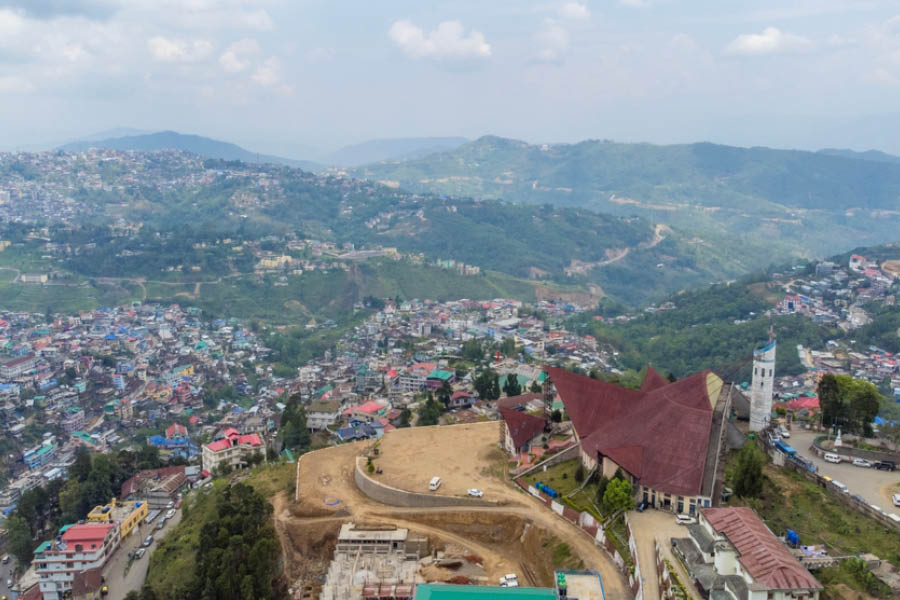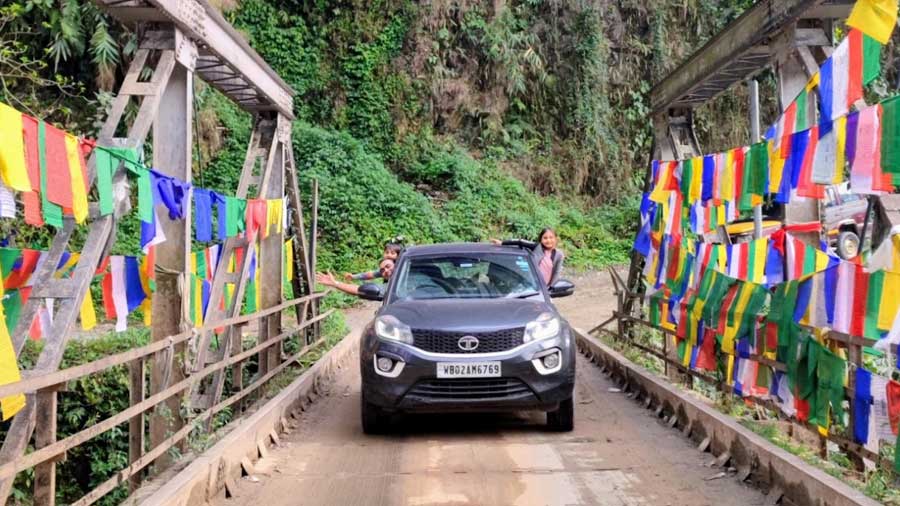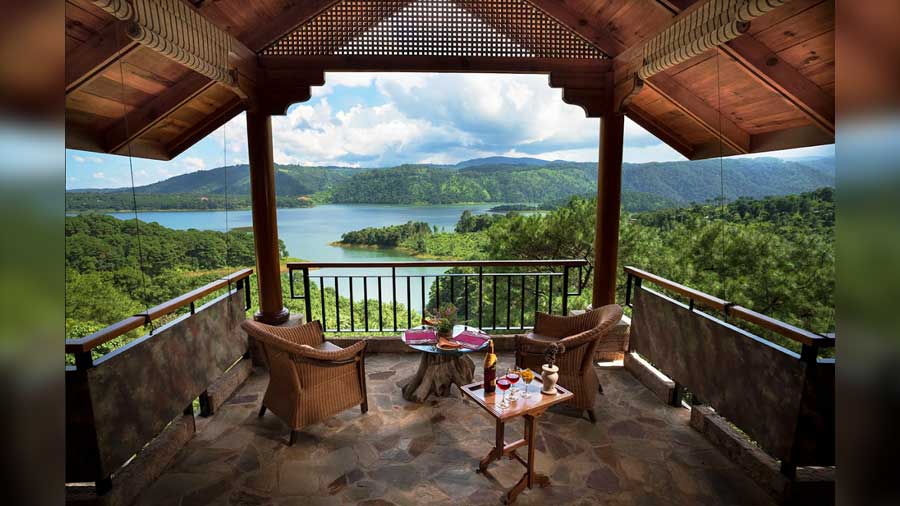The old-model green and beige buses that stand in unison at the Nagaland State Transport bus depot in Dimapur are your best bet if you are travelling to Kohima and beyond by public transport. For our first trip to the Naga capital, we arrived at Dimapur railway station from Guwahati the previous night. The bus depot is adjacent to the station and there are plenty of hotels nearby.
Our trip however was hassle-free. The new year had just begun — the air was cold and the sunshine calm on the skin. As the bus zig-zagged through the hilly terrain, the lush surroundings kept our eyes busy. For lunch, we had a stopover at a local wood-built highway restaurant, where the rice platters were favorites among travellers. There were wild apple candies, pickles, and more to interest travellers as well.
It took a little over two hours for us to get from Dimapur station to Kohima — which appeared like well-distributed blocks of mostly white and red, with a sprinkling of other colors. As the bus halted by the mid-traffic point in the city, we followed half the passengers in line and disembarked. The January sun was shining bright with a breezy spin in the air, and the city appeared yawning. In the northeastern region, the sun sets early during winter and we realised that it gets dark sooner in hilly towns. By 5 o’clock in the evening, most shops had closed and silence shrouded the hills of Kohima.
Stories of strife
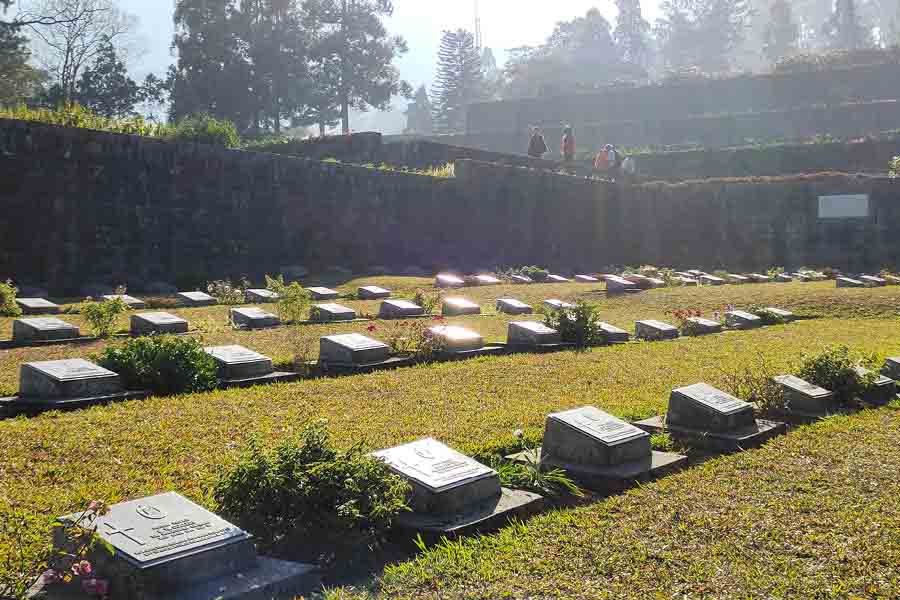
The Kohima Cemetery is a World War II Memorial Simanta Barman
We began the next morning with a visit to a prime historical spot — the Kohima War Cemetery that lies in the heart of town. At the entrance, there is a plaque detailing the brave fight and valour of the soldiers who fought Japanese troops and successfully defended the bastion during the Second World War. A profound calm prevails in the cemetery as the bright sun beams on the gravestones of the valiant soldiers. There is a rose tree masking one of them, a chrysanthemum on another, and daisies and bougainvillea on the walls. The whole site is arranged on a slope and as you walk, you walk amongst flowers and buried stories. The plaque says there used to be an old District Commissioner’s tennis court, across which the Battle of Kohima was fought. It vividly stands there at the top, the field clearly marked, and the battle is thus also called the Battle of the Tennis Court. With that brush of history, we looked over the tranquil town with its churches and houses.
Languid delights
Kohima is a slow traveller’s delight. The city moves at a languid pace itself and there is no sense of urgency to tick off things from an itinerary so you can explore leisurely. It unfolds on its own, with its quaint alleys and aligned settlements. As we set off from the cemetery towards the markets, a rally of fresh produce from the jhum cultivations in the hills decorated the streets. Multicolor kholar beans native to the land (also known as Naga kidney beans or Naga rajma), fresh and fermented bamboo shoots, a variety of greens, sweet potatoes, king chillies, and more, are abundant in the corner markets.
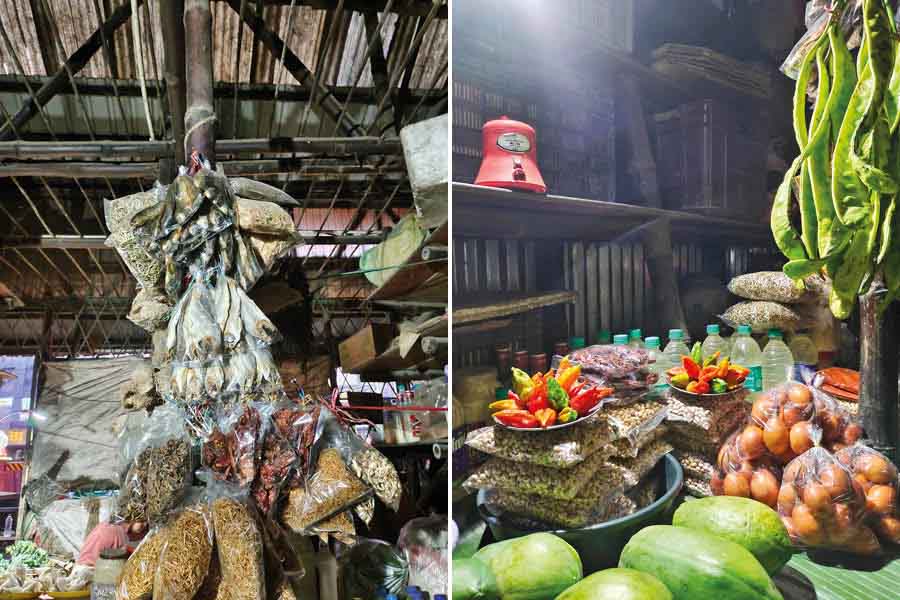
Kohima's markets, including the women-run Mao Market offer an interesting insight into the food culture of Nagaland Simanta Barman
At another roundabout, stand the famous Mao Market. Run by women from different tribes and communities, the market is a pandora’s box of everything that defines the distinct culture of the Nagas. From local varieties of rice, beans, vegetables, to beehives, meat, dried fish, frogs, snails and silkworms, the market opened to us like a knowledge hub as we tried to learn about the cuisine from the vendors. Most of the products carry medicinal value in different contexts for the natives. Items are mostly sold in cup-measures as everyone has a tin tumbler with them.
A view from the top
A half-an-hour drive from the Mao Market point lies the most revered church in Kohima — the Cathedral of Mary Help of Christians, or Cathedral Church in short. Erected in 1972, the church is regarded as the most important one in the diocese. The church, with its crimson and beige exteriors, stands on a hill almost like a towering guardian over the town. The hilltop is also a popular viewpoint, offering a panoramic view of Kohima.
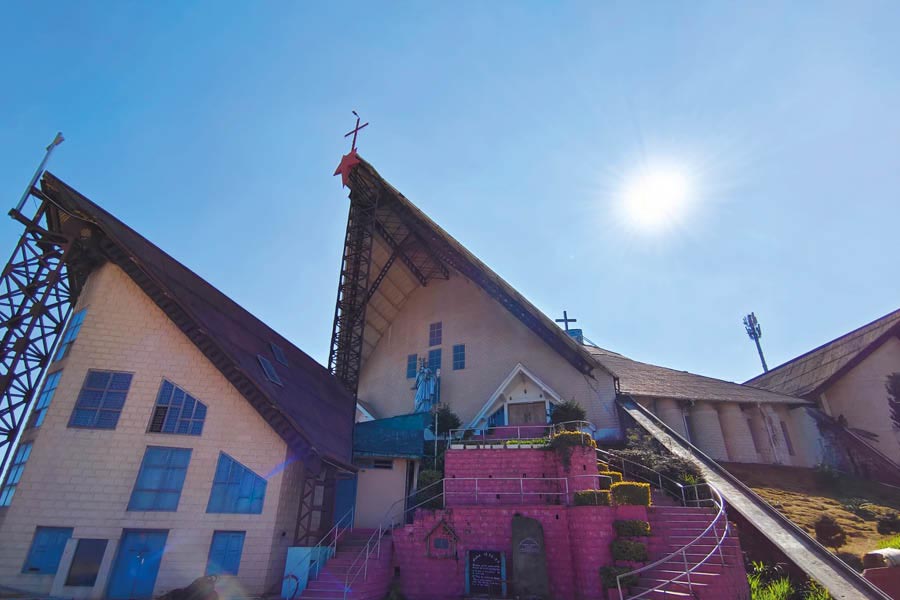
The Cathedral Church stands almost like a sentinel watching over the town Simanta Barman
Much history is buried in the delicate interiors and facades of the church. On Sundays and special occasions, it reverberates with hymns and choirs. We also see a lighthouse-like structure with flower pots adorning the base. And the great expanse of the town unfolds beneath as one soaks in the serenity.
Another church, the Kohima Ao Baptist Church, with more modern glass and tile architecture, stands below in the Oking Hospital neighbourhood, which is also known for its street food offerings.
Culinary delights
The Oking Hospital area has some of the best street foods to try in Kohima. By evening, the whole street is bustling with hawkers and vans selling steaming hot momos, chowmein, grilled meats, soups and hot beverages. Some vendors carry packets of cooked noodles in a steamer as the cold catches fast. We were offered chowmein, kept warm in a momo steamer. Nagaland is high on chillies, as it is the land of the GI-tagged raja mircha aka king chillies. I almost burnt my throat trying a scoop of a raja mircha chutney.
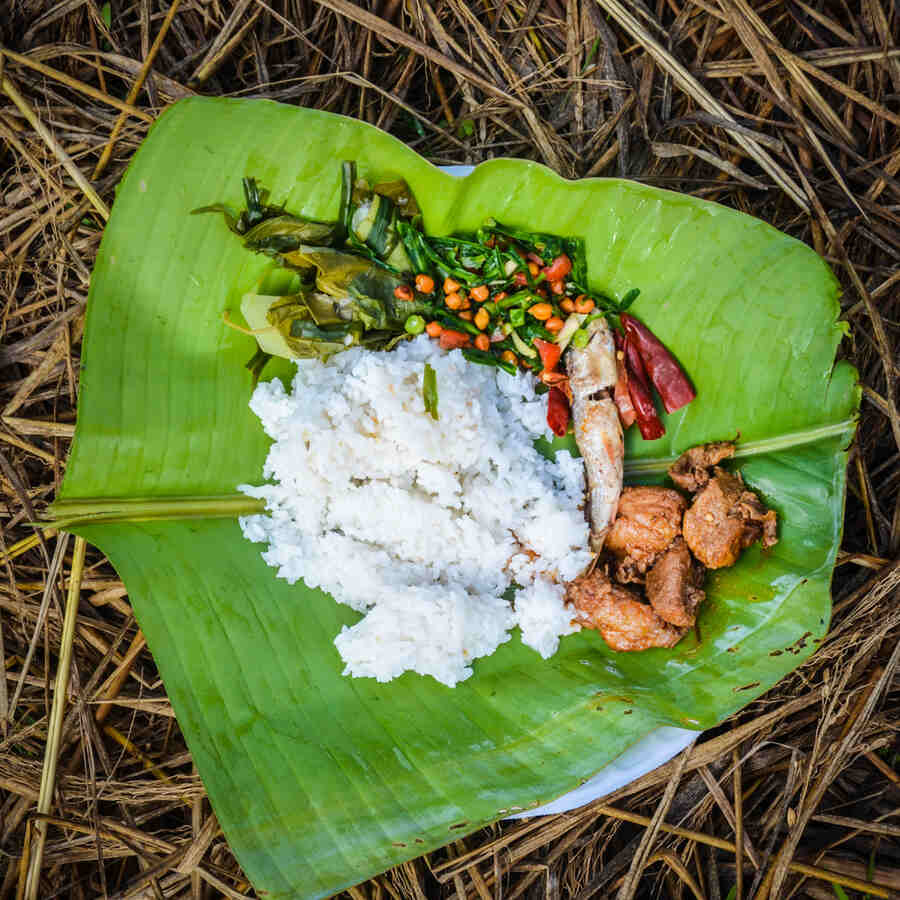
Steamed vegetables, pork, and native king chillies are staples in a Naga rice thaali Shutterstock
For a traditional Naga rice thali, we checked into the rooftop Morung Kitchen. It lies near the Oking Hospital and has a host of authentic Naga dishes. Boiled vegetables like chayote, snake beans, and cabbage, along with raja mircha chutneys give the Naga thalis their authenticity. After a warm meal there, we walked south and found ourselves at Fifa Café. As the name suggests, the interiors and exteriors are inspired by football and it is a nice spot for a quiet coffee sojourn.
By 5pm, the town is quiet again — unhurried movements in the alleys as the lights lead the way. As we walked down the almost still paths, the darkness behind the mountains seemed serene. The town appeared then like a cold night’s dream from the pages of Van Gogh, with dotted yellows and whites and a faint glow in the horizon.
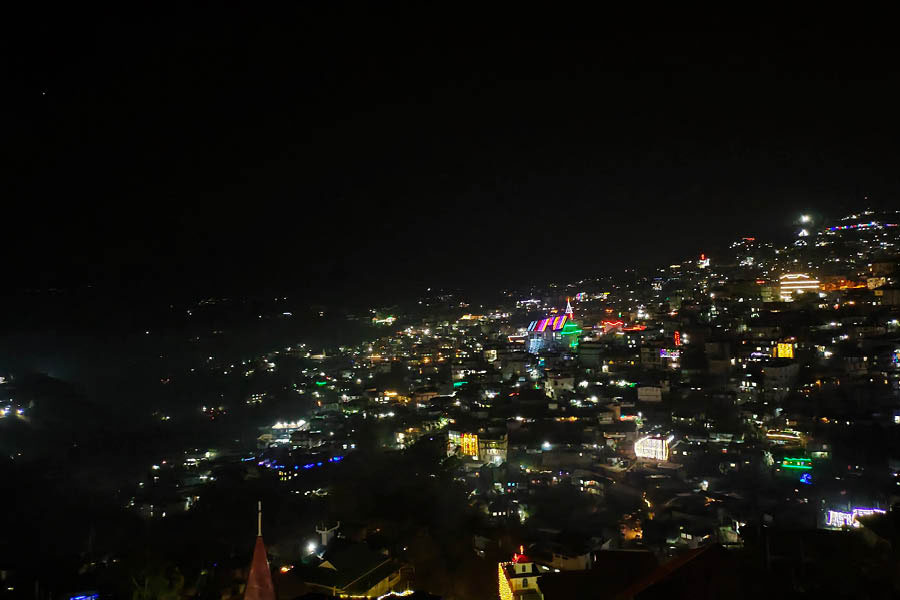
As the suns ets, Kohima looks like a van Gogh painting with lights and a faint glow over the horizon Simanta Barman
Travel Details
- Nagaland’s capital city Kohima is about 70 km and 2 hours by road from the nearest railway station and airport, Dimapur. There are direct flights from Kolkata and a few other cities to Dimapur.
- Public transport is easily available from the railway station and airport. Most state buses leave early in the morning as the roads are unpredictable and it may take longer than estimated, so best to plan your travels accordingly.
- The best time to visit Kohima is during spring or autumn/winter
- Shops are markets, including the popular Mao Market close before or by sunset, so plan your visit accordingly.
- Cabs are easily available for a roundtrip to the Cathedral Church
Simanta Barman is a freelance journalist based in Guwahati, Assam, who writes at the intersection of food, places and everything in-between.
